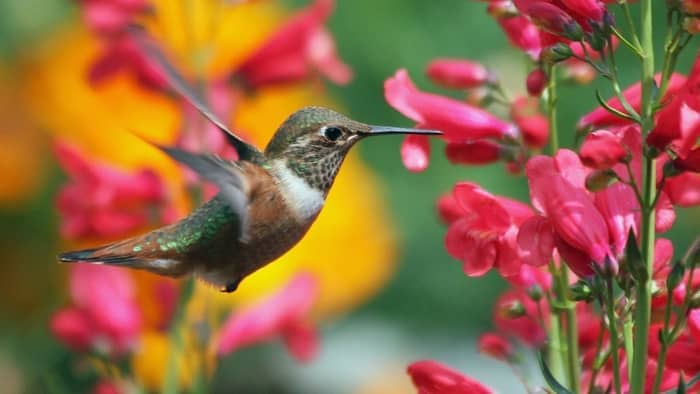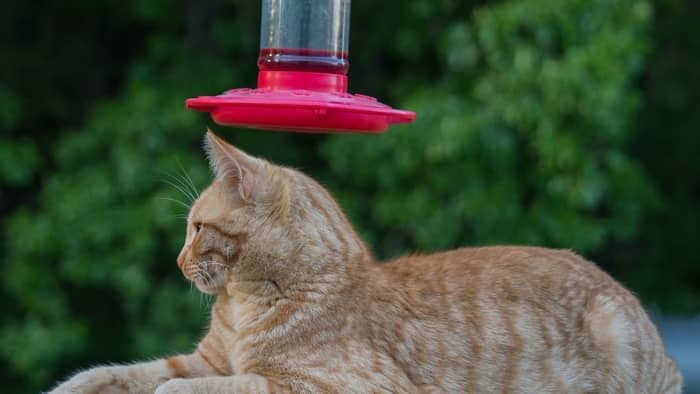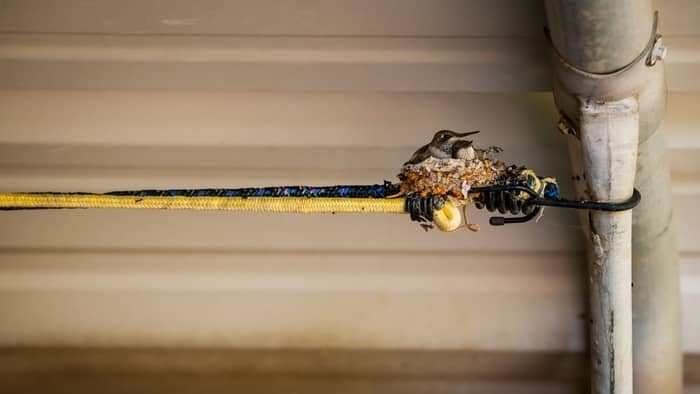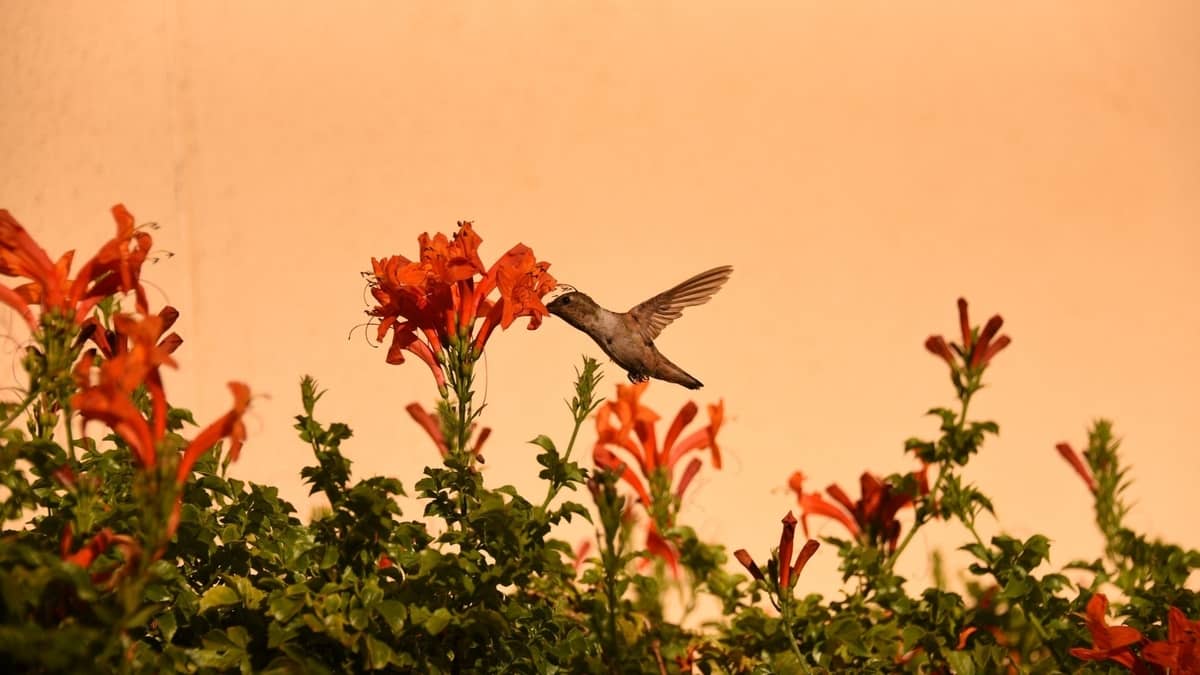Do you know how the food chain of hummingbirds works? The hummingbird food chain is what we will be discussing in this post so read on to gain some insight on this.
One of the few good ways to enjoy nature and all of the wonders it may offer you is to watch birds in their natural state. Hummingbirds are one of those little beautiful birds you can enjoy watching in their natural state. The fact that this can be done not too far from your yard makes it more fun.
Hummingbirds occupy a very interesting position on the food chain as they are both prey and predators like most other animals. Hummingbirds do feed on some smaller creatures on the food chain and they also get fed on by some other animals.
This article is an exposition of the hummingbird food chain, describing how energy is transferred to and from hummingbirds. The adapting measures adopted by hummingbirds in protecting themselves from larger animals are also discussed.
For lovers of hummingbirds, a few steps that you can put in place to protect these lovely birds from being preyed upon are also discussed. Your ability to care for hummingbirds that visit around your garden will influence how often they come around.
Before we delve into discussing the hummingbird food chain, let’s consider what the food chain really means.
Meaning Of Food Chain
For a proper discourse on the hummingbird food chain, we must take a look into what food chain really means. Food chain refers to the feeding hierarchy of organisms within an ecosystem, usually grouped into a trophic or nutritional level.
In the food chain, the first set of organisms are the producers, these are usually plants (trees and shrubs) and very small animals. The food chain is the chain that is usually occupied by bigger animals with the ability to eat other smaller animals- carnivores.
What Hummingbirds Consume In The Food Chain
Hummingbirds have a variety of food they consume ranging from flowers to insects, to homemade food. Now let’s briefly consider what hummingbirds eat and how they come by their food:
- Insects: Hummingbirds are voracious feeders of prey such as wasps, flies, gnats, aphids, leafhoppers, spiders, beetles, and other small insects. These insects according to research are a food source adopted by hummingbirds to balance their diets.
- Tree sap: Research has also discovered that most hummingbirds also drink tree sap. This is because tree sap is a great alternative to flower nectars. Just like nectar, tree sap is composed of sucrose, water, and amino acids in very similar proportions.
- Flower Nectar: Hummingbirds are also very much attracted to the nectar of flowers, especially bright colors such as red. The reason for the desirability of red flowers is that they tend to contain greater sugar content than other flowers.
- Fruit juice: if you are lucky enough to have hummingbirds around your yard, you would notice they feed on over-ripe fruit or previously pecked fruits. They do this because many species of hummingbirds find the sweet fluid of some fruits appetizing. Anna hummingbird loves fruits.
- Hummingbird homemade food: In addition to the natural options available to hummingbirds, they also consume homemade food. This food is basically a sugar-water solution. For hummingbird enthusiasts, this is one of the efficient ways to attract these birds.

What Consumes Hummingbirds Within The Food Chain
Hummingbirds just like many other smaller animals are consumed by larger animals within their ecosystem in the food chain. The common hummingbird predators within the food chain are as follows:
- Cats: Although cats are considered to be one of those lovely domestic animals you can possibly have, they pose a serious threat to hummingbirds. These domestic and feral cats sometimes consider these tiny birds as playful toys especially considering their bright colors.
- Large insects: Although hummingbirds feed on insects, they are only able to feed on small insects. Hummingbirds are prey to large insects such as praying mantis and orb-weaver spiders. These insects would sometimes lay in wait for hummingbirds to come within range.
- Avivorous birds: Avivorous birds such as greater roadrunner and loggerhead shrike haunt smaller birds. Therefore they pose a serious threat to hummingbirds within the food chain.
- Owls: Owls may also prey on hummingbirds especially when they are roosting during torpor. When hummingbirds are in this state, it is very easy for owls to prey on them.
- Snakes and lizards: Snakes and lizards also pose some challenges to hummingbirds. They usually dine on the eggs of hummingbirds when the mother is out getting food. These predators may also prey on any young hummingbird they find in the hummingbird nest.
For lovers of hummingbirds, placing hummingbird feeders in a way that does not give a change to these predators is very important. Cats should be locked inside or kept within reach when these birds are feeding on feeders.
Read more about What Do Hummingbird Tattoos Mean? 5 Wonderful Interpretations

How Do Hummingbirds Protect Themselves In The Food Chain?
Staying alive and survival is key to every living thing. This is also true for hummingbirds. Their small stature makes them easy prey to larger animals. Over the years, they have however developed a few mechanisms to stay alive within the food chain. Below are some of these mechanisms:
- Very tiny nests: The typical hummingbird nest is very small as its eggs are also very small. Most hummingbirds also lay only about two eggs at a time. The size of their eggs and the size of their nests makes it possible to hide their nests carefully away from predators.
- Speed: Trying to catch a hummingbird in flight is a gruesome and almost impossible task. These birds are very fast with the ability to fly between 25 to 30 miles per hour. Most of their body weight is therefore in flight muscle.
- Diving and Maneuvers: The hummingbird flight pattern can be likened to that of a helicopter. It has the ability to dive at incredible speed and also maneuver in split seconds. This makes it very easy to adapt to challenges in flight and effortlessly change direction when necessary.
- Flapping of Wings: To humans, the flapping of wings and humming of hummingbirds may be disturbing. However, to other bigger birds and prey, this is confusing. While trying to decipher the source of the noise, the predator is very likely to move away from the hummingbird.

Conclusion
Hummingbirds just like most other birds are both prey and predators. Their food chain is therefore very delicate. They consume most primary consumers and are consumed by other bigger predators.
As a hummingbird enthusiast, you should however strike to not only attract these lovely birds to your yard or garden. You must take steps to ensure their safety.
FAQs
[rank_math_rich_snippet id=”s-2d03e10c-0e56-452f-8065-cbc5f1ad3576″]

